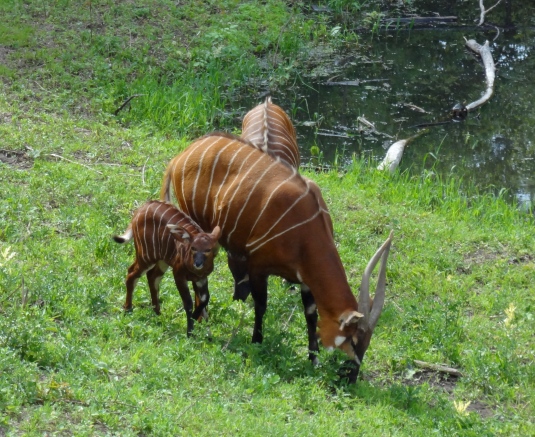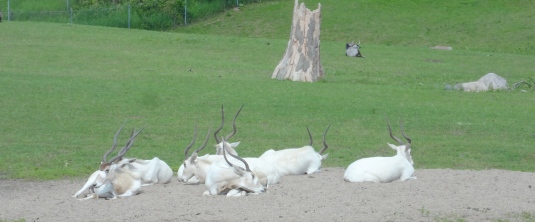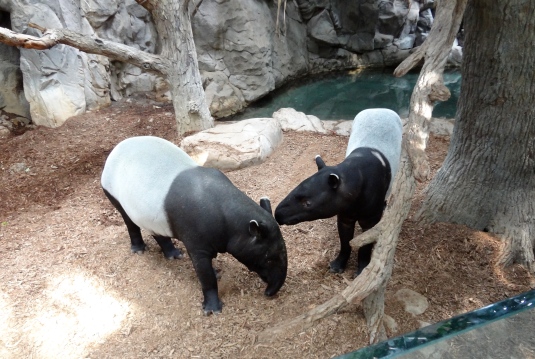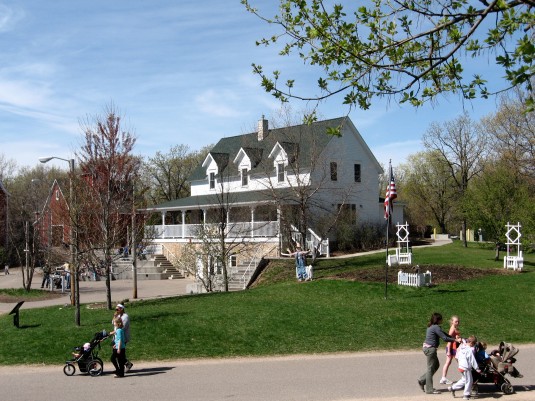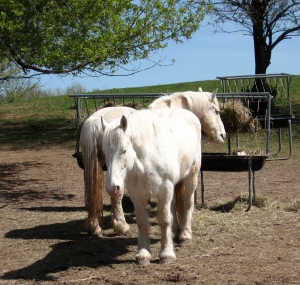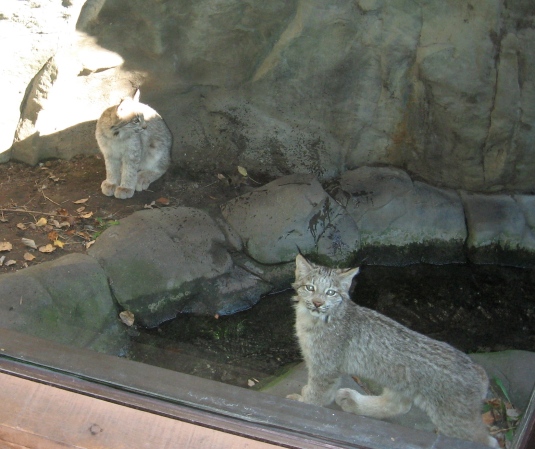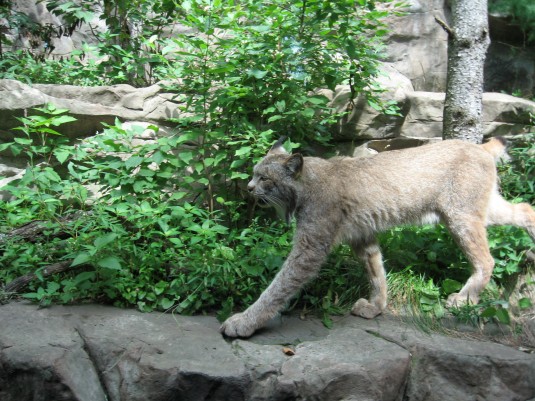At last week’s giraffe feeding, during a lull, the lad selling crackers wondered aloud, “Do the other animals feel like they’re being ignored?” He meant the five other African species sharing the same exhibit: ostriches, guineafowl, wildebeests and two species of antelope. The first kind, bongo, have gotten at least some attention by having a couple of calves last month. And bongo babies, it must be said, are extremely cute. Just look at the size of those ears!
Bongos are a nocturnal, shade-seeking, mud-wallowing antelope formerly widespread in Africa but threatened by deforestation in their native habitat. Their tongues are said to be long and mobile for leaf-plucking purposes, much like the giraffe’s. Their pregnancies are a couple weeks longer than humans’. They don’t get giraffe-level attention, it’s true, but intrigued guests often ask what they are.
The most frequent question I get while hanging out at Africa — “What are those white ones?” — points to our other antelope species, the addax. Like the wildebeests, they seem to stay just out of easy photographic range. Unlike the bongo, they’re desert dwellers, but with similarly striking horns that spiral up to 3 feet high. They have no calves at the moment, though — which brings us to the recent triumph on the Tropics trail.
From this picture of Bertie and Jon-hi, can there be any doubt that together they’d make the zoo’s first tapir calf in 20 years? At 419 days (why, yes, that’s well over a year), a tapir gestation makes human and bongo pregnancies seem like nothing at all. The currently week-old calf is not on exhibit, so I haven’t seen her in person yet; she needs to get better at nursing and swimming, since this exhibit has a pool. In the meantime, though, Zooborns posted her photo, and you can see her on our zoo’s tapir cam until she’s ready to brave the exhibit. I’m sure we all agree that day can’t come soon enough!

